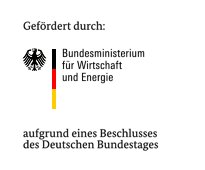


Often the standard cover glass of CCD/CMOS image sensors cause disturbing reflections or interferences. The remedy here is the removal of the cover glass.
The removal of the cover glass also offers interesting options in further steps to refine a sensor, so that relatively inexpensive sensor types can also be used for high-end applications. Examples of this are the placement of custom filters or the application of a UV-sensitive coating on the sensor surface.
Over the last few years, Eureca has developed several methods to remove the glass covers of CCD/CMOS sensors. Thus, a suitable method is available for many types. The different procedures have different failure rates due to damage to the sensors. In the best case, this rate is only a few percent.


Sony IMX 265

The development of suitable methods for the cover glass removal of image sensors was also part of a research program at Eureca, which was funded by the »Central Innovation Program of the Mittelstand« (Zentrales Innovationsprogramm des Mittelstandes (ZIM)).
We process both sensors from our own product range as well as sensors, which are provided by the customer. Customer positions are first subjected to extensive quality control prior to processing in order to examine them for suitability for subsequent processing, for example to detect changes in the manufacturer's production in good time. Only after successful testing and release by the customer is further processing carried out.

After removing the glass cover, all sensors are optically checked for possible damage and, if necessary, cleaned. An additional electro-optical test with the inclusion of test images is possible, provided that we have a suitable camera board for the respective sensor. For sensors that are processed in larger quantities, this test is always performed.
When removing the cover glass from CCD/CMOS sensors to avoid interference or reflections, we place the highest value on precision. Nevertheless, minimal residues cannot always be completely avoided. For this reason, every sensor undergoes a careful optical inspection. Any impurities found, such as dust or glass particles, are removed in a specially developed cleaning process to ensure optimum image quality. Any remaining micro-contamination can be compensated for in the subsequent application by a simple dark image correction.
After removing the cover glass, the finest contaminations are barely visible to the naked eye. Even when viewed under a microscope, it is often difficult to keep an eye on the overall condition of the sensor—especially in the case of large-area arrays. With a specially developed setup consisting of a high-resolution camera system with macro optics and dark field illumination, we can document the sensor with a resolution down to the pixel level.
What you can recognize:
Ideal for documentation, troubleshooting and quality inspection.
Available as an additional service, including digital transfer of the image data and assessment of the condition if necessary.
When removing the cover glass from CCD/CMOS sensors to avoid interference or reflections, we place the highest value on precision. Nevertheless, minimal residues cannot always be completely avoided. For this reason, every sensor undergoes a careful optical inspection. Any impurities found, such as dust or glass particles, are removed in a specially developed cleaning process to ensure optimum image quality. Any remaining micro-contamination can be compensated for in the subsequent application by a simple dark image correction.
As a protection during transport to the customer a special adhesive film is applied, which can be removed without residue before use.
Years of experience with large quantities delivered have shown that the sensors without cover glass have the same lifespan as the original sensors. However, without cover glass, the sensors are understandably quite sensitive and must be protected from moisture, dirt and mechanical contact during operation.
Our work to date has mainly focused on sensors from Sony (ILX series) and Toshiba (TCD series), as these are also used in our DIY spectrometers. However, sensors from other manufacturers have also been successfully processed.
When it comes to area sensors, we have been successful with a very large number of types from a wide variety of manufacturers. A (non-exhaustive) list of sensor types processed to date can be found on the subpage.
Relatively new in our portfolio is a method with which we can also successfully remove the cover glasses from SWIR sensors. The special feature of these sensors is that they are sensitive both in the visible range (VIS) and in the short-wave infrared range (SWIR, 400 – 1700 nm).
Cover glass removal from this type of sensor is not yet regularly processed, as the advantages of this technology often do not justify the expense. In principle, however, our techniques can also be used for many of the infrared sensors currently on the market. So if you would like to check the possibility of appropriate processing for your application, please contact us.
The various methods used involve different levels of risk, for example contamination of the sensor surface. Thanks to Eureca's many years of experience and continuous further development of the methods, effective techniques are available with which the contamination of the sensors after processing can be significantly reduced. While cleanroom quality cannot be achieved in most cases, the result is usually sufficient for most of the applications and products targeted.
The following graph shows the results for 81 sensors. The data was determined by taking a large number of test images using homogeneous illumination. The average of these images was used to calculate the mean gray value and the standard deviation. The relative standard deviation is obtained by normalizing the standard deviations to the mean grey value. The averaged image data mainly consists of the fixed pattern noise (FPN) of the sensor. A comparison of these results before and after cover glass removal provides an estimate of the increase in FPN due to processing. We found that the average increase in the mean relative standard deviation after processing is about 2.06 × 10−3.
Further information on this topic can be found in our PDF document Glass cover removal from image sensors.
After the actual cover glass removal, the sensor can be further processed. Examples of such refinements are:
Here you can easily ask a question or inquiry about our products:
Last update: 2025-07-05
